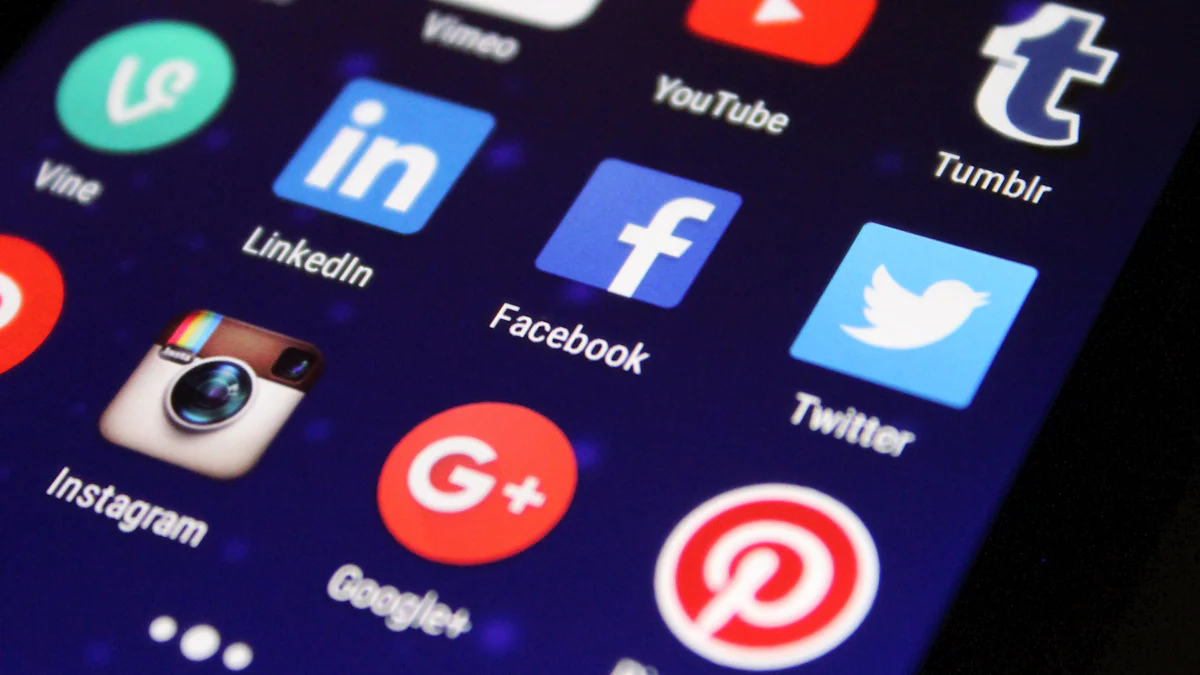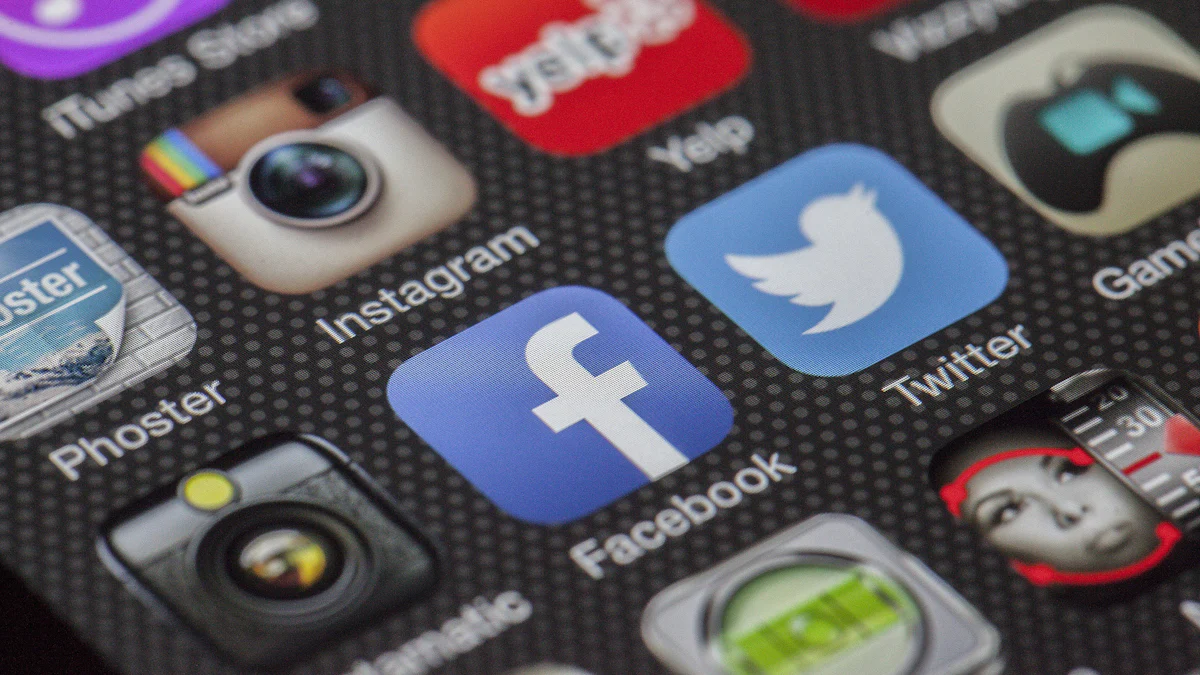Understanding tw// meaning in Different Contexts

Have you ever come across "TW" and wondered what it means? This abbreviation can have multiple interpretations depending on where you see it. For example, it might stand for "trigger warning" in one context or refer to something entirely different in another. Understanding the context is key to figuring out its true meaning. Without it, you might misinterpret the message or miss its purpose altogether. Whether you're scrolling through social media or having a conversation, knowing the tw// meaning can help you engage more thoughtfully.
Trigger Warnings and Their Purpose

What Are Trigger Warnings?
Definition and origin of trigger warnings.
Trigger warnings, often abbreviated as "TW," are alerts that warn you about content that could evoke strong emotional or psychological reactions. The idea dates back to the 1960s when therapists working with war veterans noticed how certain words or images could "trigger" memories of trauma. Although the term "trigger warning" wasn’t used back then, the concept emerged from therapy sessions for soldiers dealing with PTSD. Over time, the idea expanded to include survivors of sexual assault and other traumatic experiences. By the late 1990s and early 2000s, the term became popular in feminist circles and online communities like LiveJournal, where people flagged sensitive topics in discussions and fan fiction.
Why trigger warnings are used in content.
Trigger warnings help you prepare emotionally for content that might be upsetting. They give you the choice to engage with the material or step away if needed. For example, if a post discusses topics like violence or eating disorders, a "TW" at the start can signal that the content might be distressing. This small gesture can make a big difference in creating a safer and more inclusive space for everyone.
Common Scenarios for Using TW
Social media and online platforms.
You’ve probably seen "TW" on social media posts, especially on platforms like Twitter or Instagram. People use it to flag sensitive topics such as mental health struggles, graphic images, or discussions about abuse. This helps readers decide if they’re ready to engage with the content. It’s also common in fan communities, where creators warn about potentially triggering themes in their stories or art.
Academic and professional settings.
In classrooms, instructors often use trigger warnings before showing graphic images or discussing sensitive topics. For instance, a professor might warn students before screening a violent film or discussing racial violence. Some educators even allow students to leave the room if the material feels overwhelming. However, not everyone agrees on the role of trigger warnings in education. While some see them as a way to show empathy, others worry they might limit open discussions.
| Finding | Percentage | |---------|------------| | Educators who believe trigger warnings negatively affect classroom dynamics | 45% | | Educators who believe trigger warnings negatively affect academic freedom | 62% | | Educators who view trigger warnings favorably | 17% |
The Importance of Trigger Warnings
Supporting mental health and emotional well-being.
Trigger warnings can be a lifeline for people dealing with trauma. They let you prepare for distressing content, giving you control over how and when you engage. This can reduce anxiety and make spaces feel more inclusive. They also encourage empathy by reminding others to consider how certain topics might affect someone else. In this way, trigger warnings don’t just protect individuals—they foster a culture of understanding.
Criticisms and debates around trigger warnings.
Not everyone supports the use of trigger warnings. Critics argue that they might encourage avoidance rather than resilience. Some educators feel that classrooms should challenge students, not shield them from discomfort. Others worry that trigger warnings could stifle free speech or create a bubble where difficult topics are avoided altogether. Research also shows that trigger warnings don’t always reduce emotional distress, sparking debates about their effectiveness.
"Trigger warnings signal compassion and empathy for affected individuals, but they may also limit open dialogue in educational settings."
Despite these debates, trigger warnings remain a valuable tool for many people. Whether you see them as helpful or unnecessary, they highlight the importance of considering others’ experiences when sharing content.
TW in Gender Contexts

TW as an Abbreviation for Transgender Women
Definition of transgender women.
When you see "TW" in gender discussions, it often stands for "transgender women." These are individuals who were assigned male at birth based on their biological characteristics but identify and live as women. Their gender identity aligns with being female, and they may express themselves in ways that reflect this identity. For many transgender women, transitioning—whether socially, medically, or both—is an important part of affirming who they are.
How "TW" is used in gender discussions.
In conversations about gender identity, "TW" is a shorthand way to refer to transgender women. You might see it in online forums, social media posts, or even academic discussions. Using "TW" can make discussions more concise, but it also requires context to avoid confusion. For example, someone might use "TW" to highlight issues affecting transgender women, such as discrimination or representation. Understanding the tw// meaning in these contexts helps you engage more thoughtfully and respectfully.
The Role of Context in Gender-Related Terms
Avoiding misunderstandings in conversations.
Context is everything when it comes to terms like "TW." Without it, you might misinterpret what someone means. For instance, if you're reading a post about gaming, "TW" could mean "Team Win," but in a gender-related discussion, it likely refers to transgender women. Paying attention to the topic and tone of the conversation can help you avoid misunderstandings and respond appropriately.
Respecting identity and inclusivity.
Using terms like "TW" correctly shows respect for people's identities. It’s a small but meaningful way to acknowledge and support transgender women. When you take the time to understand these terms, you contribute to a more inclusive environment. Whether you're talking to someone directly or participating in a broader discussion, being mindful of language fosters respect and understanding.
Tip: If you're unsure about a term, don’t hesitate to ask or look it up. Showing curiosity and a willingness to learn goes a long way in building inclusive conversations.
Other Common Interpretations of TW
TW in Technology and Gaming
TW as "Team Win" in gaming communities.
If you’re into gaming, you’ve probably seen "TW" pop up in chats or forums. In this context, it stands for "Team Win." Gamers use it to celebrate victories achieved through teamwork. For example, after a hard-fought match in games like League of Legends or Valorant, someone might type "TW!" in the chat to acknowledge the group’s success. It’s a quick way to share the excitement and give credit to everyone involved.
Team-based games thrive on collaboration, and "TW" reflects that spirit. It’s not just about individual skill but about how well the team works together. So, the next time you see "TW" in a gaming conversation, you’ll know it’s all about celebrating collective effort.
Other technical uses of "TW."
In technology, "TW" can mean different things depending on the context. For instance, it might refer to "Technical Writing" in professional settings or even "Time Warp" in certain software applications. These uses are less common but still worth knowing if you’re navigating tech-related discussions.
TW in Jewelry and Everyday Language
TW as "Total Weight" in jewelry.
In the world of jewelry, "TW" stands for "Total Weight." It tells you the combined weight of all the gemstones or diamonds in a piece. This detail is crucial for understanding the value and design of the jewelry.
- "TW" refers to the total weight of all gemstones in a piece, not just a single stone.
- You’ll often see it paired with terms like "CTW" (Carat Total Weight).
- Knowing the "TW" helps you evaluate the overall quality and craftsmanship of the item.
For example, if a ring has multiple diamonds, the "TW" will give you the combined weight of all those stones. It’s a handy term to know if you’re shopping for jewelry or just curious about how it’s valued.
Miscellaneous uses of "TW" in slang and culture.
"TW" also pops up in everyday slang and culture. Sometimes, people use it as shorthand for "That’s Wild" in casual texting. In other cases, it might stand for something entirely different, like "Traveling Wave" in physics. The meaning often depends on the context, so paying attention to where and how it’s used can help you figure it out.
Whether you’re gaming, shopping for jewelry, or just chatting with friends, "TW" can mean a lot of things. Understanding the tw// meaning in these contexts makes it easier to follow conversations and engage meaningfully.
Related Terms
CW (Content Warning)
How CW differs from TW.
You’ve probably seen both "CW" and "TW" used online, but they aren’t exactly the same. Here’s how they differ:
- "TW" stands for trigger warning, while "CW" means content warning.
- "TW" is more common, but "CW" is becoming popular because it avoids creating a hierarchy of triggers.
- "CW" feels more neutral since it doesn’t place a value judgment on the content.
In short, "CW" works as a broader term, while "TW" focuses on specific emotional triggers. Both aim to prepare you for what’s ahead, but they do it in slightly different ways.
Examples of CW usage.
You’ll find "CW" used in many contexts, not just for emotional content. For instance:
- In radar physics, "CW" refers to continuous-wave radar systems. These are used in police speed radars and motion detectors.
- In laser physics, "CW" describes lasers that produce a continuous beam instead of pulsing.
While these technical uses are less common in everyday life, they show how versatile the term can be. When you see "CW" in a post or discussion, the context will help you figure out whether it’s a warning or something more technical.
NSFW (Not Safe for Work)
Definition and common uses.
"NSFW" stands for "Not Safe for Work." It’s a warning that tells you content might not be appropriate for public or professional spaces. You’ll often see it on websites, email attachments, or social media posts.
Here’s when "NSFW" is typically used:
- To flag adult themes, explicit language, or graphic images.
- To warn about content that could be embarrassing or inappropriate if viewed in a workplace.
Think of it as a heads-up to avoid awkward situations when you’re in a public setting.
How NSFW relates to TW and CW.
"NSFW" shares some similarities with "TW" and "CW," but it serves a different purpose.
- "TW" warns about content that could emotionally disturb someone.
- "CW" flags potentially upsetting material, like graphic images or sensitive topics.
- "NSFW" focuses on content that’s unsuitable for public viewing, often due to adult themes.
Each term helps you navigate content more thoughtfully, whether you’re protecting your mental health or avoiding an awkward moment at work.
Tip: If you’re unsure about a term, take a moment to check its meaning. It’s always better to pause and understand than to misinterpret.
By now, you’ve seen how "TW" can mean different things depending on where you encounter it. Whether it’s a trigger warning, a reference to transgender women, or even "Total Weight" in jewelry, the meaning shifts with the context. For example, in jewelry, "TW" tells you the combined weight of all gemstones in a piece, which helps you understand its value and design.
Understanding the tw// meaning isn’t just about decoding abbreviations. It’s about being mindful of the situation and the people involved. When you take the time to consider context, you avoid misunderstandings and show respect for others’ experiences. So, the next time you see "TW," pause and think. A little empathy and curiosity can go a long way in creating meaningful conversations.
Remember: Words carry weight, just like gemstones. Use them thoughtfully.
FAQ
What does "TW" mean in different contexts?
"TW" can mean many things depending on where you see it. It might stand for trigger warning, transgender women, team win, or even total weight in jewelry. Always check the context to understand the tw// meaning correctly.
Why are trigger warnings important?
Trigger warnings help people prepare for sensitive content. They support mental health by giving you the choice to engage or step away. This small step creates safer spaces for everyone.
How do I know if "TW" refers to transgender women?
If the discussion involves gender identity or inclusivity, "TW" likely means transgender women. Pay attention to the topic and tone of the conversation to avoid confusion.
Is "TW" the same as "CW"?
Not exactly. "TW" focuses on emotional triggers, while "CW" is broader and flags any sensitive content. Both aim to prepare you for what’s ahead but serve slightly different purposes.
Can "TW" mean something in gaming?
Yes! In gaming, "TW" often means "Team Win." It’s a way to celebrate teamwork and success after a match. Gamers use it to highlight collective effort and victory.
See Also
The Enchantment Behind Dual Band Engagement Rings
The Meaning Behind Donning Two Wedding Bands
Exploring the Meaning of Three Stone Diamond Rings

